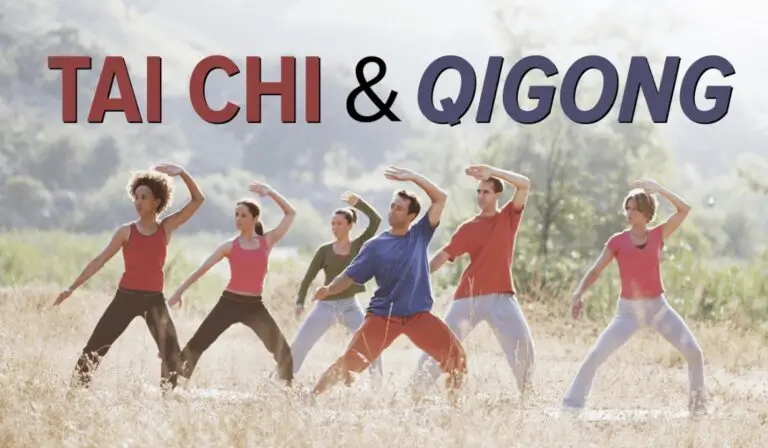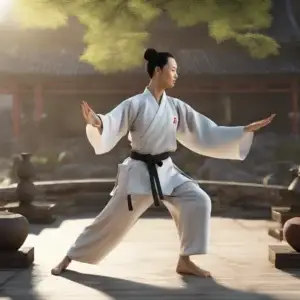
Qigong and Tai-Chi are two traditional Chinese exercises that focus on meditation, self-healing, and self-cultivation. These exercises use coordinated body movements, rhythmic breathing, meditation, and mental focus.
Qigong refers to the practice of energy cultivation and can be broadly categorized into two types: movement Qigong and static Qigong.
Characterise The Origins
The practice of Qigong emerged from the Confucian, Buddhist, Daoist, medicine, and martial arts traditions, each with its own purpose and training methods. Tai-Chi as a martial art, involves more complex and choreographed movements coordinated with the breath, using a meditative approach to cultivate Qi. A more historical perspective can be explored here.
Traditional Chinese Medicine (TCM) believes that poor health is caused by a blockage of Qi inside the body. To move Qi inside the body, practitioners use imagery training to guide the flow of Qi in the directions of the meridians described by TCM theories. Health Qigong and Tai-Chi are widely practiced worldwide to promote physical and psychological well-being and treat various health conditions. According to a recent study, 131 million practitioners took part in at least one mind-body exercise, including Tai-Chi, health Qigong, yoga, breathing techniques, and Pilates, in the past year.
The origin of health Qigong dates back more than 4,000 years in ancient China. Qigong and Tai-Chi were initially passed down from sophisticated masters to their family lineage as a form of secretive and esoteric self-training. The Chinese government consolidated a wide range of self-cultivating and self-healing practices under the category of Qigong in the late 1940s. Qigong practice was allowed only in state-run rehabilitation centres and hospitals under supervision during the Great Leap Forward and Cultural Revolution. After the Cultural Revolution, Qigong practice was revitalized and encouraged by the Chinese government. Health Qigong and Tai-Chi have been standardized and promoted by the Chinese Health Qigong Association since 2000, allowing their dissemination worldwide.
How We Characterise The Forms
There are a great number of health Qigong forms developed by various teachers and training schools in Chinese society throughout history. Currently, the International Health Qigong Federation recognizes and promotes six health Qigong forms: Ba Duan Jin, Yi Jin Jing, Wu Qin Xi, Liu Zi Jue, Mawangdui Daoyin Shu, and Tai-Chi Yang Sheng Zhang. Tai-Chi is a soft style martial art characterized by leveraging, coordinating, and relaxing the joints rather than muscular tension to neutralize, yield, or initiate attacks. The most common Tai-Chi style is the Yang style, which has become increasingly popular in recent years. Health Qigong and Tai-Chi have both demonstrated physical and psychological benefits and are widely practiced for their ability to enhance overall well-being.
The following video seeks to separate some of the characteristics of both Qigong and Tai Chi. It may bring a deeper understanding of the art form you seek to learn, and why you remain committed to learning.






